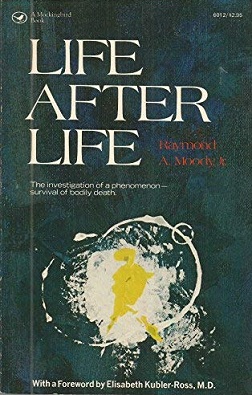The previous post – On the readings for June 1 – noted that the second reading for Sunday, June 1, was 1st Peter 4:12-14; 5:6-11. In turn, passages from this First Letter of Peter have led to scholarly debate about Jesus going to Hell (or “Limbo”), in the days between His crucifixion and resurrection. It also led to the concept of “the harrowing of hell.”
Note that readings from the Peter’s First Letter have been the featured second Bible reading since April 27, the Sunday after Easter, aka the Second Sunday of Easter.
Among those readings – specifically, the one for May 25 – was 1 Peter 3:19–20, in which this first Bishop of Rome said that Jesus “went and proclaimed to the spirits in prison [i.e., those in hell at the time of His resurrection], because they formerly did not obey…” Then in 1 Peter 4:6 the Apostle added, “For this reason the gospel was preached also to those who are dead, that they might be judged according to men in the flesh, but live according to God in the spirit.” (E.a.)
Those passages led to the concept of the harrowing of hell:
This is the Old English and Middle English term for the triumphant descent of Christ into hell (or Hades) between the time of His Crucifixion and His Resurrection, when, according to Christian belief, He brought salvation to the souls held captive there since the beginning of the world… Writers of Old English prose homilies and lives of saints continually employ the subject, but it is in medieval English literature that it is most fully found, both in prose and verse, and particularly in the drama.
See CATHOLIC ENCYCLOPEDIA: Harrowing of Hell – New Advent. In other words, like much of the rest of the Bible, this concept of the harrowing of hell has provided a rich “mother lode” of material for art and literature, and has throughout history.
On that note, see for example, The Bible as Literature | the Bible ~ a literary work and an …:
We’ll take a look at how universal stories, themes, metaphors, and characterizations surface in the Bible, and explore the many literary forms and genres that can be found there: poetry, narratives, epistles, proverbs, parables, satire, and visionary writing.
All of which provides another reason for reading and studying the Bible: to find grist for becoming a better, more-productive and more fascinating artist or member of the literati.
Then too it might also be said that in his First Letter, the Apostle Peter advanced the whole concept of “life after life.” (See e.g. Raymond Moody – Wikipedia, the free encyclopedia.)

That is, the “Old Testament view of the afterlife was that all people, whether righteous or unrighteous, went to Sheol when they died. No Hebrew figure ever descended into Sheol and returned, although an apparition of the recently deceased Samuel briefly appeared to Saul when summoned by the Witch of Endor.” It wasn’t until the “Second Temple period,” beginning about 515 B.C.*, that some Hebrew writers began to “elaborate the concept of Sheol, dividing it into sections based on the righteousness or unrighteousness of those who have died.” See Harrowing of Hell – Wikipedia.
In other words, our concept of the – or an – Afterlife has apparently developed over the centuries since “the Witch of Endor” (seen below). One constant has remained: “The above views share the traditional Christian belief in the immortality of the soul.” (Wikipedia.) See also the post On Ascension Day, with a note on the First Law of Thermodynamics.
There is a third constant, as noted in the Daily Office reading for May 28, the Eve of Ascension (Day). That is, the revelation of Psalm 68:20 came as The Scribe was struggling mightily to bring this post to a suitable end (and so that “revelation” may well have been preordained before the beginning of time). Psalm 68:20 reads – in the Book of Common Prayer version on page 677 – “God is the Lord, by whom we escape death.”
So all in all, “death” – like New Jersey – would seem to be a pretty good place to escape from. In the meantime it’s reassuring to think that Jesus would “go to hell” on our behalf…

Saul and the Witch of Endor, Benjamin West (1777)
Other references of possible interest include: Paradise – Wikipedia, Zohar – Wikipedia, and/or Heaven.
As to “515 B.C.” Herein The Scribe will be using the old-fashioned B.C. – “before Christ” – rather than the newer, pointy-headed liberal denomination, “before the Common Era.” See Common Era – Wikipedia, the free encyclopedia: “The CE/BCE notation has been adopted by some authors and publishers wishing to be neutral or sensitive to non-Christians because it does not explicitly make use of religious titles for Jesus, such as ‘Christ’ and Dominus (‘Lord’), which are used in the BC/AD notation, nor does it give implicit expression to the Christian creed that Jesus was the Christ.” (E.a.) See also, Anno Domini – Wikipedia.
The “Witch of Endor” image is courtesy of http://upload.wikimedia.org/wikipedia/commons/f/f7/BenjaminWest-Saul-and-the-Witch-of-Endor-1777.jpg.
See also Saul and the Witch of Endor | West, Benjamin | V&A Search the …: “The subject comes from the Old Testament, the First book of Samuel, chapter 28, and describes a visit by King Saul to the Witch of Endor and the apparition of the ghost of Samuel who informs him of his impending defeat and death. Such subjects rejected the quiet dignity of classical history painting in favour of protagonists ruled by their emotions and fearful of death. The emphasis was on human frailty in the face of forces beyond the rational.”